MINI JAPANESE DICTIONARY JAPANESE -ENGLISHENGLISH- JAPANESE ABOUT TUTTLE ABOUT TUTTLE
Books to Span the East and West Our core mission at Tuttle Publishing is to create books which bring people together one page at a time. Tuttle was founded in 1832 in the small New England town of Rutland, Vermont (USA). Our fundamental values remain as strong today as they were thento publish best-in-class books informing the English-speaking world about the countries and peoples of Asia. The world has become a smaller place today and Asias economic, cultural and political influence has expanded, yet the need for meaningful dialogue and information about this diverse region has never been greater. Since 1948, Tuttle has been a leader in publishing books on the cultures, arts, cuisines, languages and literatures of Asia. Our authors and photographers have won numerous awards and Tuttle has published thousands of books on subjects ranging from martial arts to paper crafts. We welcome you to explore the wealth of information available on Asia at www.tuttlepublishing.com. Published by Tuttle Publishing, an imprint of Periplus Editions (HK) Ltd. www.tuttlepublishing.com 2019 by Periplus Editions (HK) Ltd All rights reserved. ISBN 978-1-4629-2096-9 Distributed by: North America, Latin America and Europe Tuttle Publishing 364 Innovation Drive, North Clarendon, VT 05759-9436 USA. Tel: 1(802) 773-8930 Fax: 1(802) 773-6993 www.tuttlepublishing.com Asia Pacific Berkeley Books Pte Ltd 3 Kallang Sector #04-01 Singapore 349278 Tel: (65) 6741 2178 Fax: (65) 6741 2179 www.periplus.com Japan Tuttle Publishing Yaekari Building, 3rd Floor, 5-4-12 Osaki, Shinagawa-ku, Tokyo 141 0032 Tel: (81) 3 5437-0171 Fax: (81) 3 5437-0755 www.tuttle.co.jp 22 21 20 195 4 3 2 1 Printed in China1906RR TUTTLE PUBLISHING is a registered trademark of Tuttle Publishing, a division of Periplus Editions (HK) Ltd. Introduction This Mini Dictionary is an indispensable companion for visitors to Japan and for anyone in the early stages of learning Japanese. It contains all the 13,000 or so Japanese words that are most commonly encountered in colloquial, everyday speech. For the sake of clarity, only the common Japanese equivalents for each English word have been given. When an English word has more than one possible meaning, with different Japanese equivalents, each meaning is listed separately, with a clear explanatory gloss. The layout is clear and accessible, with none of the abbreviations and dense nests of entries typical of many small dictionaries. The language of this dictionary is that spoken universally throughout the islands of Japan, by some 120 million people. Japanese is not clearly related to any other languages of the world. There was no written form of Japanese until the early centuries CE, when the system that had long been in use in China was borrowed and adapted. Written Chinese does not relate directly to the sounds of the language; instead it makes use of a very large number of characters representing different syllables, to each of which is linked both a meaning and a sound. The characters derived initially from the stylized representation of concrete objects, to which the abstract meanings needed for the expression of the complete language were added by processes of combination and metaphor. The pronunciation of each of these characters is not obvious from the written form but must be learnt separately in each case. To make matters more complex, in Japanese each character (kanji) is usually associated with several possible pronunciations. One or more (the on readings) are derived from the Chinese syllable originally represented by the character, and others (the kun readings) from native Japanese elements of equivalent or associated meaning. Each reading is used in different contexts (for example when used alone or in compound words, as part of the general vocabulary or in proper names) and the choice is only partly predictable. The Chinese language does not make use of inflections (changes to the form of a word to indicate grammatical information such as tense or number), so it can be effectively written in characters representing unvarying syllables. By contrast Japanese has many inflections, and the variable word endings and particles need to be represented in writing to prevent ambiguity. To this end a set of syllabic symbols (kana borrowed names), derived from Chinese characters but with only sound values and no meaning component, are used in conjunction with kanji. Thus in written Japanese the roots of words are represented by kanji, with the inflections and particles being in hiragana (rounded kana), derived from simplified cursive forms of certain kanji. Small versions of hiragana, known as furigana (applied kana), are also sometimes written above kanji to show their readings, for example in material for children or foreigners, or in case of ambiguity or some obscure characters used in personal names. A second version of the same set of syllables, with more angular forms and known as katakana (side kana, being derived from a part only of certain kanji) is also used for purposes such as transcribing foreign words and names, for representations of natural sounds, and sometimes for emphasis. In this dictionary every Japanese word and phrase is also clearly spelled out in the Roman alphabet (romaji). In contrast with the complexity of the writing system, the pronunciation of Japanese is quite straightforward for English speakers: it is not a tonal language and syllables are evenly stressed. Distinguishing clearly between long and short vowels is important, as in several cases a completely different meaning can result. Long vowels are pronounced with twice the length of short vowels, effectively creating an extra syllable. In this dictionary they are indicated by a bar over the vowel concerned; elsewhere you may find them written with a double vowel, or with long e represented as ei and long o as ou, but these practices can be misleading to English speakers. Pronunciation Japanese is made up of strings of syllables (a, ka, ta, etc.) which join together following simple rules of pronunciation (e.g. anata is a-na-ta). anata is a-na-ta). Unlike English, each syllable has mostly even stress and combinations of vowels (e-i, a-i, etc.) do not represent completely new sounds. Vowels Japanese has five vowels, pronounced either long or short. Distinguishing the length is very important as sometimes the meaning depends on the difference (e.g. oji-san/ojii-san, terms of address to a middle-aged man and an old man respectively). Note that a final e is always pronounced. | a | like a in America | asa | | like ah in ah! | m | | e | like e in pet | desu, sake | | like ere in there | on-san | | i | like i in pit | nichi | | like ee in keep | chsai | | o | like o in top | yoru | | like aw in law | ky | | u | like u in put | haru | | like oo in coop | ch |
Vowel combinations Basically, each vowel should be pronounced separately. The most common combinations are: | Next page
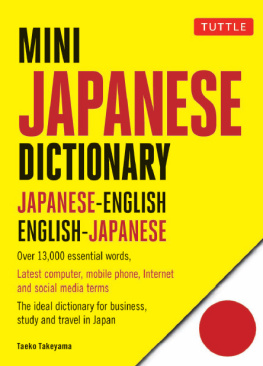
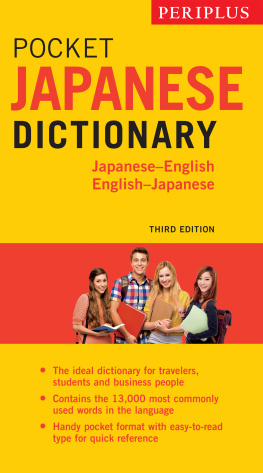
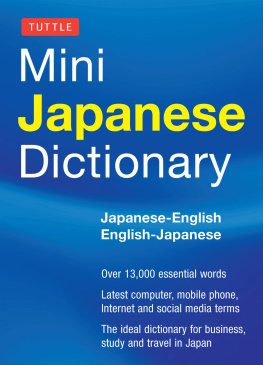
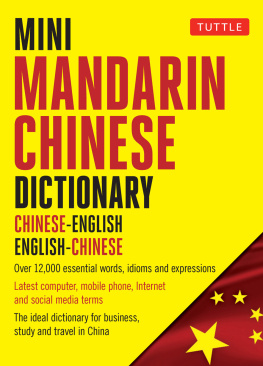
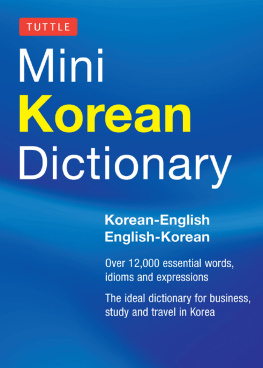
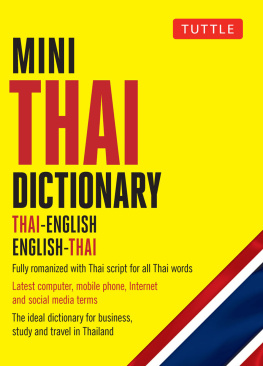
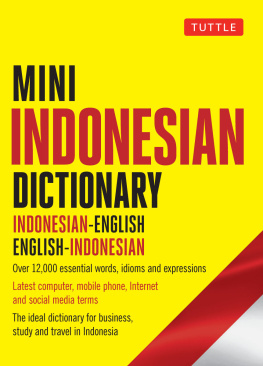
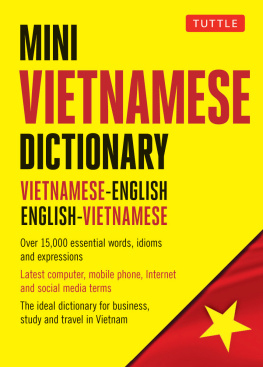


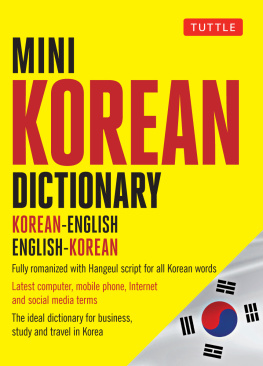
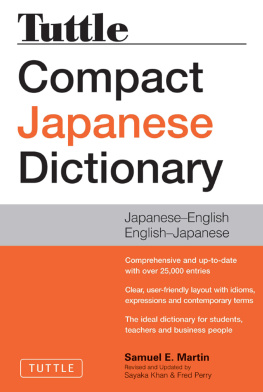

 ABOUT TUTTLE
ABOUT TUTTLE